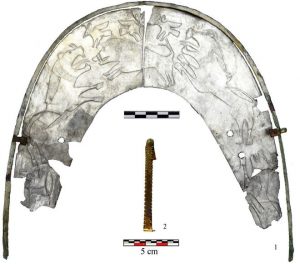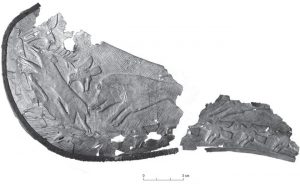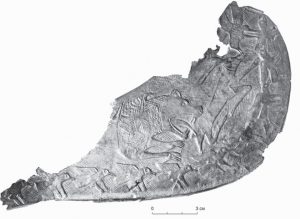Archaeologists discovered numerous stone structures sprawled over about 120 hectares near the eastern shore of the Caspian Sea in Kazakhstan.

Several types of structures were identified by the researchers of Mangistaus State Historical and Cultural Reserve and Russian Academy of Sciences Siberian Department’s Institute of Archaeology and Ethnography. There are small structures measuring 4 by 4 metres and large ones even up to 34 by 24 metres.

The structures are composed of stone slabs inserted vertically into the ground. Some have carvings of weapons and animals on the surface. Archaeological research also led to discovery of a a saddle made partly of silver and covered with images of wild boars, deer and “beasts of prey” that may be lions. The initial find was made in 2010 by a metal detectorist who found the silver remains and brought them to archaeologists who in turn studied the area discovering the stone complex. After initial excavation in 2014 archaeologists were able to excavate more remains of the saddle and other artefacts, such as bronze remains of a whip. The relief decoration on the saddle, as believed, was impressed on the front surface and it seems the ancient artisans designed the images out of leather and glued them onto wooden boards.

The decoration dates the artefact to the times when the Roman Empire was collapsing, and the Huns were on the move across Asia and Europe. It is not clear why the silver saddle was placed in the stone structure, though it may have been created for a ritual purpose or as a burial good. The remains of one skeleton buried beneath the stone structure were found, but the skeleton may date to centuries after the silver saddle was deposited there.


(after Evgeniï Bogdanov & Live Science)